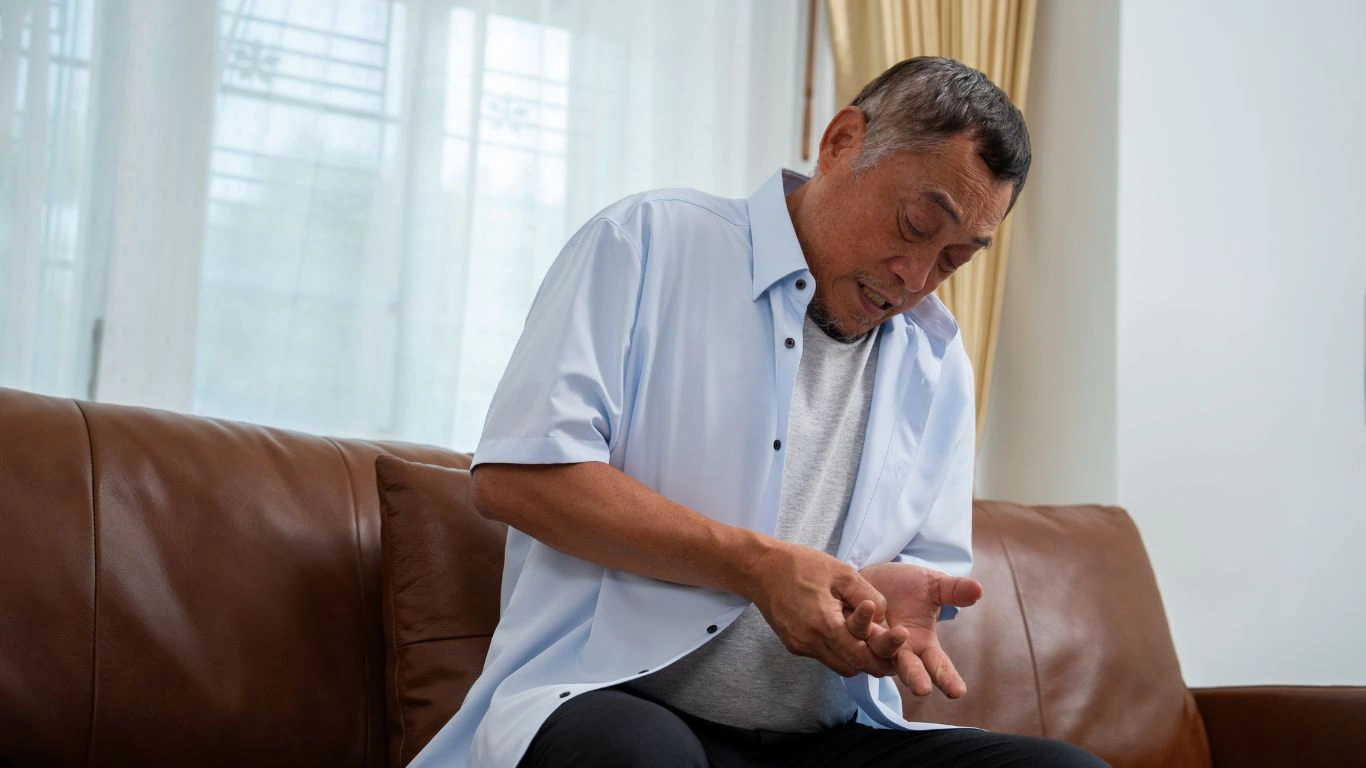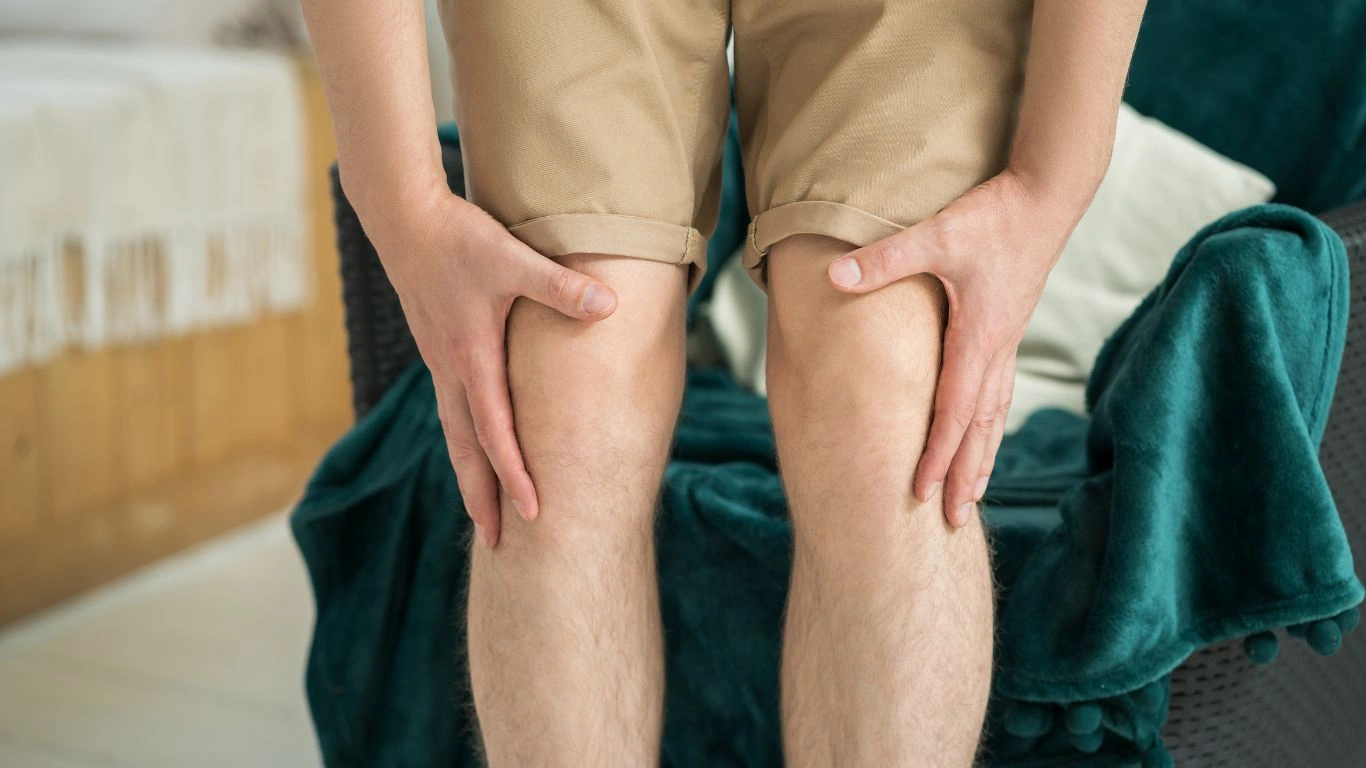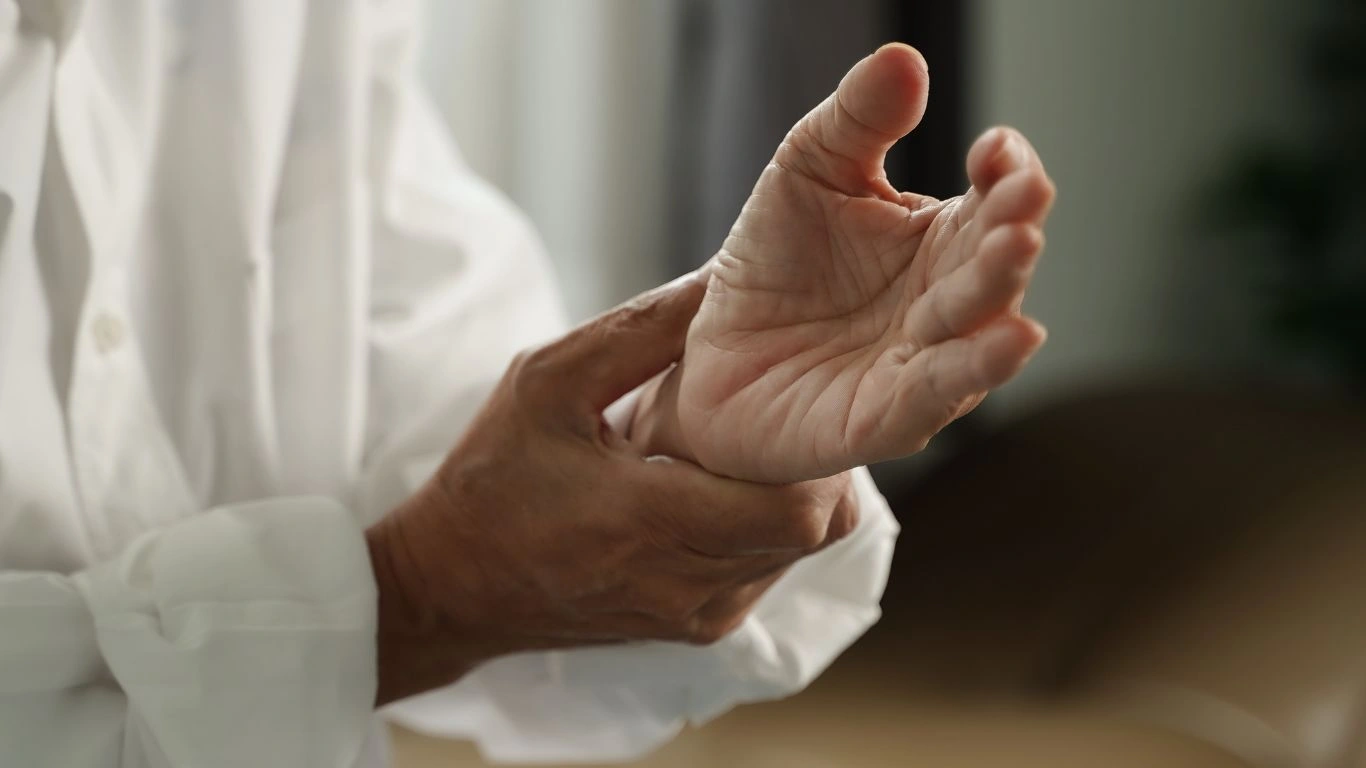Boost Joint Flexibility Naturally with Rheumatoid Arthritis Relief Tips
Rheumatoid arthritis (RA) is a condition that impacts millions of people worldwide. If you’re living with RA, you already know how challenging it can be to keep your joints flexible and pain-free. As a Rheumatology Nurse Practitioner, I’ve seen firsthand how much a person’s quality of life can improve with the right approach to managing flexibility. RA doesn’t just affect your joints—it can limit your mobility, make everyday tasks feel impossible, and leave you feeling frustrated and defeated. But, you don’t have to let it control your life. With the right strategies and consistent effort, you can boost your joint flexibility, reduce stiffness, and reclaim your independence. Let’s dive into how we can do just that!
Understanding Rheumatoid Arthritis and Its Impact on Joint Flexibility

Rheumatoid arthritis is an autoimmune condition where your immune system mistakenly attacks the lining of your joints, causing inflammation, pain, and stiffness. Unlike osteoarthritis, which is primarily caused by wear and tear of the cartilage, RA can affect multiple joints at once, and often symmetrically, meaning it impacts both sides of your body.
The inflammation from RA can lead to severe joint damage if left untreated, making it harder to move freely. Over time, if your joints become stiff and immobile, even basic tasks like opening a jar, walking, or holding a pen can become difficult. That’s why maintaining flexibility is crucial in the early stages of the disease to prevent further complications.
Why Joint Flexibility Is Key in Managing Rheumatoid Arthritis
When your joints become stiff, the range of motion is reduced, and your ability to move without pain becomes limited. This is where flexibility comes into play. Flexibility exercises and routines aren’t just about stretching—they’re essential for maintaining joint function, reducing stiffness, and preventing further damage.
By keeping your joints as flexible as possible, you’re essentially creating a buffer against the wear and tear that comes with RA. This helps in lessening the severity of flare-ups, improving circulation, and promoting the production of synovial fluid, which lubricates the joints and reduces friction.
Simple Exercises to Boost Joint Flexibility with RA

Now that we know how important flexibility is for joint health in RA, let’s talk about some exercises that can help. You don’t need to be an athlete or spend hours in the gym to see results. The key is consistency. Here are a few gentle exercises that can boost your flexibility without putting too much strain on your joints.
1. Gentle Stretching
Stretching is a great way to enhance flexibility. It helps increase blood flow to your joints, reduces muscle tension, and eases stiffness. But, it’s crucial to listen to your body when stretching. Start slow, and if you feel any sharp pain, stop immediately. Here’s a simple stretching routine:
- Neck stretches: Slowly tilt your head to the left and right, holding each side for 10-15 seconds.
- Shoulder rolls: Roll your shoulders forward and backward 10 times in each direction.
- Wrist stretches: Gently bend your wrist back and forth to stretch the tendons and ligaments.
2. Range-of-Motion Exercises
Range-of-motion exercises are essential for maintaining joint flexibility. These exercises help keep your joints moving through their full range, preventing them from becoming stiff or “frozen.” Some simple range-of-motion exercises you can try include:
- Hand exercises: Stretch and bend your fingers to improve hand flexibility.
- Elbow bends: Slowly straighten and bend your elbows to keep them flexible.
- Knee raises: Lift one leg at a time to your chest, alternating legs.
Do these exercises several times a day to maintain your joint function and improve flexibility.
3. Low-Impact Aerobic Exercise
Low-impact exercises like walking, swimming, or cycling are excellent ways to boost flexibility and overall joint health. These activities get your blood circulating, which helps keep your joints lubricated, while being gentle enough to avoid causing strain or injury.
If you’re just starting, aim for 10-15 minutes a day, and gradually increase your time as your body adapts. The goal is to get moving without overloading your joints.
Diet and Joint Flexibility

Did you know that what you eat can also play a significant role in your joint health? A diet rich in anti-inflammatory foods can help reduce the inflammation caused by RA and improve overall joint flexibility. Some foods to focus on include:
- Omega-3 fatty acids: Found in fatty fish like salmon, flax seeds, and walnuts, omega-3s are known to reduce inflammation.
- Leafy greens: Vegetables like spinach, kale, and broccoli are packed with antioxidants and anti-inflammatory compounds.
- Whole grains: Brown rice, oats, and quinoa are excellent sources of fiber and help maintain a healthy weight, which reduces strain on your joints.
On the other hand, try to limit foods that can trigger inflammation, like refined sugars and processed foods. Your body will thank you for it!
Physical Therapy and Its Role in Enhancing Flexibility

If you’re struggling with limited joint flexibility, physical therapy can be a game-changer. As a Rheumatology Nurse Practitioner, I’ve seen many patients who initially feel overwhelmed by the idea of physical therapy, thinking it’s only for severe cases. But that’s not the case at all! In fact, physical therapy (PT) is an incredibly useful tool, whether you’re in the early stages of RA or dealing with more advanced symptoms.
Physical therapists are experts in understanding how your body works, especially when it comes to joint mobility and flexibility. They can design a personalized exercise program that targets your specific needs, helping you regain movement and reduce pain. From strengthening exercises to gentle stretches, PT can guide you in ways that reduce the risk of injury while promoting joint function. The best part? These exercises can be done at home, with just a few adjustments and the right knowledge.
How Physical Therapy Can Help with RA Flexibility
There are several ways physical therapy directly benefits people living with RA. For starters, therapists can help improve your posture, which in turn reduces stress on your joints. Better posture means less strain and less inflammation, making it easier for you to go about your daily routine. Additionally, PT helps you learn how to protect your joints during movement. This is especially important if you’re engaging in daily tasks like typing or cooking, where small movements over time can lead to flare-ups.
Beyond just helping with flexibility, physical therapists can also teach you techniques for managing pain. They’ll show you how to move in ways that reduce discomfort and promote healing. It’s like having a coach who understands exactly what your body needs!
Incorporating Mindfulness and Stress Reduction for Joint Health

One aspect of rheumatoid arthritis that is often overlooked is the connection between stress and joint health. You might be surprised to learn that stress can actually contribute to flare-ups and worsening of symptoms. In my own experience, I’ve seen how patients who regularly manage their stress often have fewer and less severe flare-ups than those who don’t.
Stress can increase inflammation in the body, and when you’re living with RA, it’s essential to manage your stress levels. This is where mindfulness and relaxation techniques come in. Practices like meditation, deep breathing, and even yoga can have a significant impact on how you feel both mentally and physically. By reducing stress, you’re giving your joints a better chance to stay flexible and move without pain.
Simple Ways to Practice Mindfulness
Don’t worry, you don’t need to be a meditation expert to reap the benefits of mindfulness. Here are a few simple techniques you can incorporate into your daily routine to reduce stress and improve your overall wellbeing:
- Deep breathing exercises: Try taking slow, deep breaths in through your nose, hold for a few seconds, and exhale slowly through your mouth. Doing this for 5-10 minutes can help calm your nervous system.
- Guided meditation: There are plenty of free apps and YouTube videos available that guide you through mindfulness sessions. This can help you feel more relaxed and centered throughout the day.
- Progressive muscle relaxation: This technique involves tensing and then relaxing different muscle groups in your body. It’s great for releasing physical tension that might be affecting your joints.
Even just 10 minutes a day can make a huge difference in how you feel, both mentally and physically.
Supplements and Natural Remedies for Joint Flexibility

If you’re looking for ways to support your joint health from the inside out, certain supplements and natural remedies can be incredibly helpful. Of course, it’s always important to speak with your doctor before adding new supplements to your routine. But here are some options that I’ve seen help many of my patients in the management of RA:
1. Omega-3 Fatty Acids
As mentioned earlier, omega-3 fatty acids—found in fatty fish like salmon, flaxseed, and walnuts—are known for their anti-inflammatory properties. Research suggests that omega-3s can help reduce the inflammation caused by rheumatoid arthritis, leading to less pain and stiffness in the joints. These fatty acids also support overall heart health, making them a win-win for anyone with RA.
2. Glucosamine and Chondroitin
Glucosamine and chondroitin are naturally occurring substances found in your cartilage. They play a role in maintaining healthy joint function and may reduce the symptoms of arthritis. Some studies suggest that taking glucosamine and chondroitin supplements may help relieve pain and improve mobility in people with RA. Again, make sure to check with your healthcare provider before starting this supplement, especially if you’re already on medication.
3. Turmeric and Curcumin
Turmeric, and its active compound curcumin, has been shown to have strong anti-inflammatory effects. Curcumin may help reduce joint inflammation and pain associated with rheumatoid arthritis. Some people find relief from joint stiffness by incorporating turmeric into their diet or taking curcumin supplements. I’ve seen a number of patients who swear by it!
4. Vitamin D
Vitamin D plays a crucial role in bone health, and deficiency can make the symptoms of RA worse. It’s important to maintain healthy vitamin D levels, as it can help with both bone strength and immune system function. If you’re not getting enough from your diet or sunlight, a supplement might be necessary. Many RA patients report feeling better with a boost in their vitamin D intake.
These supplements, when used as part of a comprehensive treatment plan, can support joint health and flexibility, but they should always be used in conjunction with other RA management strategies like exercise and medication.
Adapting Your Lifestyle for Better Joint Flexibility

Living with rheumatoid arthritis requires more than just physical exercises and medication—it often involves making lifestyle adjustments to keep your joints flexible and pain-free. As someone who has seen countless patients with RA, I can tell you that those who make thoughtful changes to their daily habits tend to experience fewer flare-ups and better long-term joint function. Whether it’s your work environment, daily routines, or stress management techniques, the right adjustments can make a huge difference.
One of the first things I advise my patients to do is to avoid staying in one position for too long. Whether you’re sitting at a desk, standing, or lying down, keeping your body in a single posture for hours can cause stiffness and discomfort. Regular movement is crucial. Little things like standing up to stretch every 30 minutes or using a chair that supports your back can work wonders in helping maintain joint flexibility.
Workplace and Home Environment Modifications
When it comes to RA, it’s all about making things as easy on your joints as possible. Let’s start with your workplace—if you work at a desk, try using ergonomic tools like chairs with good lumbar support and keyboards that allow your hands and wrists to stay in a neutral position. I’ve seen patients who make small changes like this experience a noticeable difference in reducing strain on their joints.
At home, there are also some simple modifications that can help. For example, using adaptive tools like jar openers or reachers can reduce the amount of stress you put on your hands and wrists. And if you’re someone who enjoys cooking, consider using a sit-down station where you can work at counter height without bending down constantly. It’s these little modifications that add up over time and make a big impact on your joint health.
Keeping Active: The Importance of Movement
Beyond formal exercise routines, staying active throughout the day is vital for RA patients. You don’t need to be doing strenuous workouts—just simple activities like walking, gardening, or even light housework can keep your joints moving and flexible. The goal is to find activities that you enjoy and can do regularly without overloading your joints.
I’ve had patients who found great relief from simply going on short walks every day. Walking helps promote blood flow to your joints, reduces stiffness, and improves overall mobility. The key is consistency. Even just 15 minutes a day can make a significant difference over time. And don’t be afraid to start slow. If you’re not used to being active, try short, gentle stretches first and work your way up.
The Role of Medication in Managing Joint Flexibility

For many people with RA, medication plays a crucial role in controlling inflammation and managing pain. While physical therapy, exercise, and lifestyle changes are key to improving flexibility, they work best when combined with the appropriate medication. It’s important to understand that medication can’t cure RA, but it can significantly reduce symptoms, which allows you to focus on boosting your joint flexibility.
The treatment options vary depending on the severity of the disease and the specific needs of the patient. Common medications prescribed for RA include disease-modifying antirheumatic drugs (DMARDs), biologic agents, and nonsteroidal anti-inflammatory drugs (NSAIDs). These medications work together to reduce the inflammation in your joints, allowing you to move with greater ease.
DMARDs, like methotrexate, are often the first line of defense in managing RA. They work by suppressing the immune system to slow down the damage caused by the disease. Biologics are a newer class of drugs that target specific components of the immune system and are often used when DMARDs are not effective. NSAIDs, on the other hand, help to relieve pain and reduce inflammation in the short term.
In my experience, patients who follow a medication plan tailored to their specific needs and continue with their exercise routine often see the best outcomes in terms of joint flexibility and overall mobility. Always keep an open dialogue with your healthcare provider about how your medications are working, and be sure to report any changes or side effects that may affect your ability to move freely.
Seeking Support: Community and Counseling
When you’re living with rheumatoid arthritis, it’s easy to feel isolated. But remember, you’re not alone! There are plenty of support groups and online communities where you can share your experiences, get advice, and find encouragement from others who understand what you’re going through. I’ve seen so many of my patients benefit from talking to others who are dealing with the same challenges. It’s a great way to learn new coping strategies and feel less alone in your journey.
Additionally, counseling or therapy can be an important aspect of managing RA. Chronic conditions like RA can sometimes lead to feelings of frustration, anxiety, or depression. Talking to a professional can help you process these emotions and develop healthier ways to cope with the emotional aspects of the disease.
Remember, it’s not just your body that needs care—it’s your mind, too. Take time for self-care, and don’t hesitate to reach out for support when you need it.
References
Disclaimer
The information in this article is intended for general informational purposes and should not be considered medical advice. Always consult with your healthcare provider before making any changes to your treatment plan, exercise routine, or diet. Each individual’s experience with rheumatoid arthritis is unique, and the strategies discussed here may not be suitable for everyone. This article is not a substitute for professional medical guidance and care.

Tarra Nugroho is a dedicated Nurse Practitioner with a strong foundation in family and preventive care. She brings both compassion and clinical expertise to her practice, focusing on patient-centered care and health education. As a contributor to Healthusias.com, Tarra translates medical knowledge into clear, empowering articles on topics like women’s health, chronic disease management, and lifestyle medicine. Her mission is simple: help people feel seen, heard, and informed—both in the clinic and through the content she creates. When she’s not caring for patients, Tarra enjoys weekend hikes, plant-based cooking, and curling up with a good health podcast.






